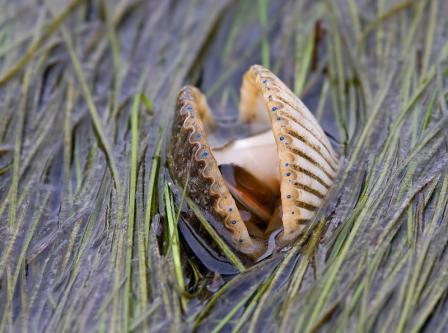An Introduction to Ocean and Coastal Acidification
 Acidification harms marine life and resources important to humans, like this scallop.
Acidification harms marine life and resources important to humans, like this scallop.Carbon dioxide is a small percent (about 0.04%) of the gaseous mixture that makes up the atmosphere, but that small amount has a big effect on ocean chemistry. The carbon dioxide that humans are releasing to the atmosphere by burning fossil fuels (oil, coal, and natural gas) is changing the chemistry of the ocean by increasing its acidity. In addition to ocean acidification from carbon dioxide in the atmosphere, land-based sources of pollution can contribute to localized acidification of coastal waters. The causes of ocean and coastal acidification are well understood, but scientists are still documenting its worsening effects.
Ocean and coastal acidification can harm plants and animals. Shell-forming animals like clams and oysters are particularly vulnerable. Impacts to sensitive species will likely have a ripple effect on all kinds of life in the ocean. Ultimately, key resources like seafood that humans rely on will be affected. Because of this serious issue, EPA is working to address ocean and coastal acidification— and you can help too.
